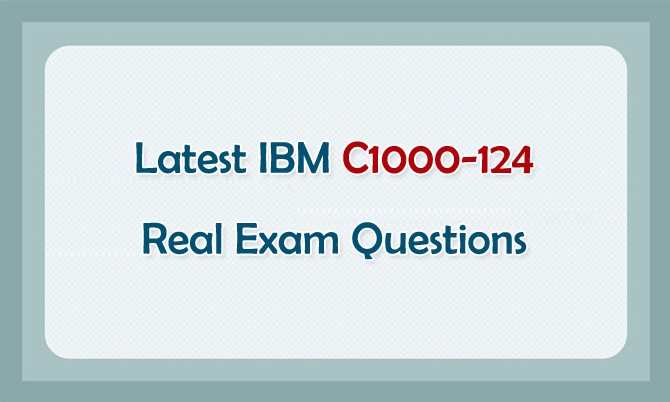IBM C1000-124 exam is a required test for IBM Certified Advocate-Cloud v1 certification, which can explain the essential characteristics, history, and trends of cloud computing. Passing IBM C1000-124 exam is a first step for you to get certified. We provide the latest IBM Certification C1000-124 real exam questions, which are the best preparation material for you to study the test well. I also collect all the other C1000-124 exam information for you to study the test.
Section 1: Cloud computing and its essential characteristics, history, and emerging trends 8%
Section 2: The business case for cloud computing 7%
Section 3: Service and deployment models of cloud computing 5%
Section 4: Components of cloud architecture 25%
Section 5: Introduction to IBM Cloud 13%
Section 6: IBM Cloud Infrastructure 18%
Section 7: Deploying IBM Cloud Applications 8%
Section 8: Services on IBM Cloud 16%
All the IBM C1000-124 real exam questions are the best preparation material for you to study the above IBM Cloud Advocate v1 topics. Share some IBM Certification C1000-124 real exam questions and answers below.
1.According to NIST, what are the five essential characteristics of the cloud?
A. On-demand network access, dedicated pool of computing resources, direct attached storage, rapid provisioning, and self service
B. Platform as a service, bring your own software license, ability to reply applications over the internet, software as a service, and private network
C. On-demand self-service, broad network access, resource pooling, rapid elasticity, and measured service
D. Networks, firewalls, storage, applications, and services
Answer: C
2.According to NIST, how is cloud computing defined?
A. A model for enabling convenient, on-demand network access to a shared pool of compute resources
B. On-demand non configurable computer resources that can be rapidly provisioned
C. The capability to provide dedicated network access that can be provisioned in batch mode
D. A model for delivering a dedicated pool of computing resources on premises
Answer: A
3.What is a smart assistant (also known as virtual assistant)?
A. A Cloud device that enables DevOps to build applications easier and faster
B. A small sensor or other device that constantly send its status and other data to the cloud
C. A tool that helps to manage compliance to various standards
D. A software application that continues to learn about the user's preferences as usage grows
Answer: D
4.What is a challenge of Serverless Cloud Computing in low-latency financial applications?
A. Long processing transactions can have hidden direct and indirect costs
B. Requires new security paradigms and best practices
C. Containers may need to cold start resulting in delays
D. Serverless containers cannot record the logs required for financial auditing
Answer: B
5.On which open source project are Functions on IBM Cloud built?
A. App Connect
B. Openwhisk
C. Apache Cassandra
D. Kubernetes
Answer: B
